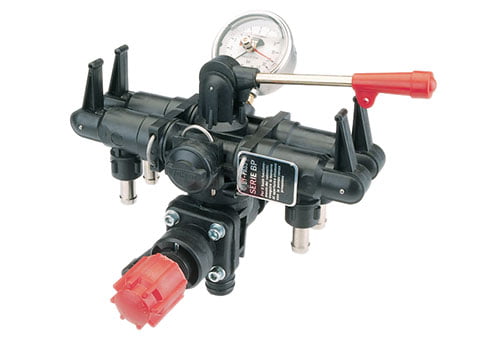Vital Aspects to Think About When Picking Control Valves
Vital Aspects to Think About When Picking Control Valves
Blog Article

Maximize Power Financial Savings and Convenience With Advanced Building Automation Controls
In the world of modern-day architecture and center management, the combination of advanced building automation regulates stands as a pivotal improvement. By harnessing the power of automation, buildings can adjust, react, and progress in ways that were once unbelievable.
Energy Performance Advantages
Energy effectiveness benefits can substantially reduce energy usage and operational costs in buildings. By applying energy-efficient practices and innovations, building owners and drivers can attain substantial cost savings while also adding to ecological sustainability. Among the primary advantages of boosting power efficiency in buildings is the reduction of utility costs. Energy-efficient systems, such as sophisticated structure automation controls, can maximize the usage of sources like heating, cooling, and lights, causing reduced power costs gradually.
Furthermore, boosted power effectiveness can prolong the life-span of structure devices and systems. By operating much more effectively, cooling and heating systems, lighting fixtures, and various other structure elements experience less damage, causing minimized maintenance and substitute expenses. Additionally, energy-efficient structures often regulate higher home values and rental prices, offering lasting monetary advantages to owners.
Furthermore, power performance can boost resident convenience and efficiency. Correctly managed interior atmospheres with optimum illumination and thermal problems create an even more positive and favorable workspace, leading to improved staff member fulfillment and performance. Generally, the power performance advantages related to sophisticated building automation controls are complex, including price savings, environmental stewardship, and resident health.
Enhanced Comfort Control
Enhancing comfort control in structure settings requires an advanced integration of advanced automation systems for optimum owner well-being. By utilizing advanced structure automation controls, centers can tailor the indoor atmosphere to satisfy the specific requirements and preferences of residents. control valves.
By incorporating these sophisticated controls, structures can not only improve comfort yet likewise improve power efficiency by maximizing system operations based on real occupancy and use patterns. Inevitably, focusing on owner convenience via sophisticated automation systems leads to a more enjoyable and much healthier indoor environment.
Operational Effectiveness Improvements

Additionally, the application of real-time monitoring and analytics devices makes it possible for building operators to determine energy inefficiencies and functional anomalies immediately. By continually keeping track of power usage patterns and system efficiency metrics, changes can be made in real-time to optimize energy intake and guarantee peak functional efficiency. control valves. Furthermore, incorporating demand reaction techniques right into structure automation controls can better improve operational performance by dynamically changing energy usage based upon grid problems and rates signals
Indoor Environment Optimization
Effective interior climate optimization is an essential aspect of building automation controls, ensuring occupants' comfort and wellness while making best use of energy cost savings. By utilizing advanced sensing units and controls, building automation systems can continuously change and keep an eye on temperature level, humidity degrees, air quality, and published here ventilation to produce an optimal indoor setting. Preserving comfortable and regular conditions not only enhances owner contentment but also enhances performance and total wellness.
Interior climate optimization also plays a crucial function in power effectiveness. By fine-tuning air conditioning, air flow, and home heating systems based upon real-time information and occupancy patterns, building automation controls can substantially minimize energy intake - control valves. Applying techniques such as demand-controlled air flow and thermal zoning can assist minimize energy waste while ensuring that each area of the structure gets the required conditioning.

Lasting Setting Production
Building automation controls not only maximize interior environment conditions for power performance and owner convenience yet additionally lay read review the structure for producing a sustainable environment through critical monitoring of systems and resources. By integrating advanced structure automation modern technologies, such as sensing units, actuators, and intelligent software, centers can monitor and adjust energy use in real-time to lessen waste and minimize their carbon impact. These systems enable predictive maintenance, recognizing prospective concerns before they rise and enhancing equipment efficiency to improve longevity and performance.
Furthermore, sustainable atmosphere creation expands past energy management to incorporate water preservation, waste decrease, and indoor air quality enhancement. Building automation controls can control water use, find leaks, and make certain appropriate garbage disposal methods, adding to general sustainability initiatives. In addition, by checking and managing air flow and filtration systems, these technologies improve owner health and efficiency while lowering power usage connected with a/c operations.
Conclusion
To conclude, progressed structure automation controls offer considerable advantages in terms of energy cost savings, comfort control, functional performance, interior environment optimization, and creating a sustainable setting. By executing these controls, structures can visit this website attain optimum performance while decreasing energy consumption and enhancing passenger convenience. It appears that making use of innovative automation innovation is essential in improving building performance and producing a much more sustainable future.
Power efficiency benefits can considerably minimize energy usage and functional expenses in structures. In general, the energy performance advantages associated with advanced structure automation controls are complex, incorporating price savings, environmental stewardship, and resident well-being.
Furthermore, integrating need feedback methods into structure automation controls can additionally improve operational effectiveness by dynamically adjusting power usage based on grid problems and prices signals.
Building automation regulates not just enhance indoor environment conditions for power effectiveness and occupant comfort yet likewise lay the structure for producing a sustainable atmosphere with calculated management of systems and resources.In verdict, advanced structure automation regulates offer substantial benefits in terms of power savings, convenience control, operational performance, interior environment optimization, and producing a lasting environment.
Report this page